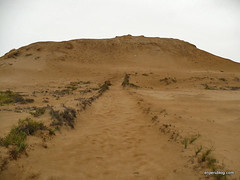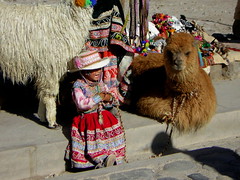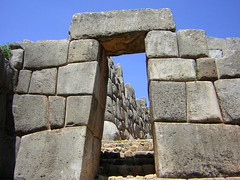The Alameda, in the heart of the northern district of Rimac, north of the river Rimac and the centre of the city, was originally built in 1611 by the Marquis de Montesclaros.
Later in 1770 Viceroy Manual de Amat refurbished it, adding donated fountains from the chief of Lima’s bullfighting ring.
Category: "History"
The Kandozi
In the heart of the vast jungle department of Loreto, close to the river Pastaza, live an ethnic group known as the Kandozi, ancestral guardians of an immense lake called the Rimachi. A lake where floating islands form a labyrinth of channels between which shoals of fish dash perhaps avoiding the ferocious piranhas.
Glimpse of Surco’s past
In the clean ordered urban streets of the Limeño district of Santiago de Surco there is a living glimpse of it’s past, from a time of farms and plantations, when the urban sprawl hadn’t quite reached quiet little Surco.
Colegio Nacional Nuestra Señora de Guadalupe
This may just be the most famous school in Lima. The school of Lima’s elite since 1840, it has seen the rich, powerful and influential pass through its doors. Most of today’s political, military and business leaders are graduates and were students during the later part of Lima’s heyday.
María Parado de Bellido
María Parado was an ordinary woman turned hero during the struggle for Peru’s independence.
She was born in Huamanga, Ayacucho in the 1760s, married in the 1770s and had seven children. It was in the 1820s that she decided to help the nationalists fighting against the royalist Spanish army. Her husband and son were fighting with the nationalists while she remained in the Spanish stronghold of the city of Huamanga (Ayacucho).
The Royal Inca Weavers of Huamachuco
In Huamachuco, descendants of royal weavers produce beautiful, world-renowned belts and blankets.
In 1977 the only way into Tulpo, Mollepata, and Mollebamba, towns located within the boundaries of the ancient hacienda of Tulpo, was on foot or by horse. I recognized that something had happened that set these people and their blankets apart from others in Peru. The textiles around Tulpo, Mollepata, and Mollebamba were just far too different and beautiful to think otherwise. More than twenty-five years later I was to learn why.
Abimael Guzmán – The Movie!
Abimael Guzmán was the leader of the terrorist group The Shining Path, and group that brought misery, death and destruction to all of Peru – but Ayacucho in particular. An independent movie has now been made about the leader’s capture.
Pampa de Quinua, Ayacucho
A journey of just over 1 hour took us from the city to the site of the Battle of Ayacucho. As mentioned in the previous blog on the history of Ayacucho, this is where South American and Peruvian independence from Spain was won.
History of Ayacucho
Ayacucho is famous for its celebrations during the Easter season, a season I’ll be here to witness. The town has a population of over 90,000, swelling during Semana Santa as people arrive to witness the religious festivities.
The city has a long and important history, dating back as much as 15,000 years where the first evidence of human habitation was found in the caves of Pikimachay. Thousands of years later, but still before the rise of the Incas, the area was home to the Huari civilisation which spanned about half of the Peruvian Andes…
Los Barrios Altos
Fine architecture, grand buildings, horse drawn carriages ferrying around the rich. This affluent area is adjacent to the city centre laid out by the conquistador Pizarro and dates back to not long after he founded it.
La tapada limeña
The muslim Moors who conquered much of Spain left their mark there – for hundreds of years after the Christian reconquering many Islamic traditions continued to be followed in the south. The Moors impact on Spanish culture is visible in the language, the architecture and typical dress.
In South America these Islamic influences were brought from Spain by Spanish immigrants in the times of the various vice royalties – during Spain’s colonial height.
The Central Railway of Peru
It’s among the most notable railways of the world and is unequalled in the technical difficulties overcome and the high elevation reached in its construction, climbing over the divide of the Andes from Callao to Huancayo in the department of Junín.









![Lord of Ucupe: “King of Bling” Tomb Sheds Light on Ancient Peru [Featured]](http://farm4.static.flickr.com/3001/2702458380_c996b07c98_m.jpg)
